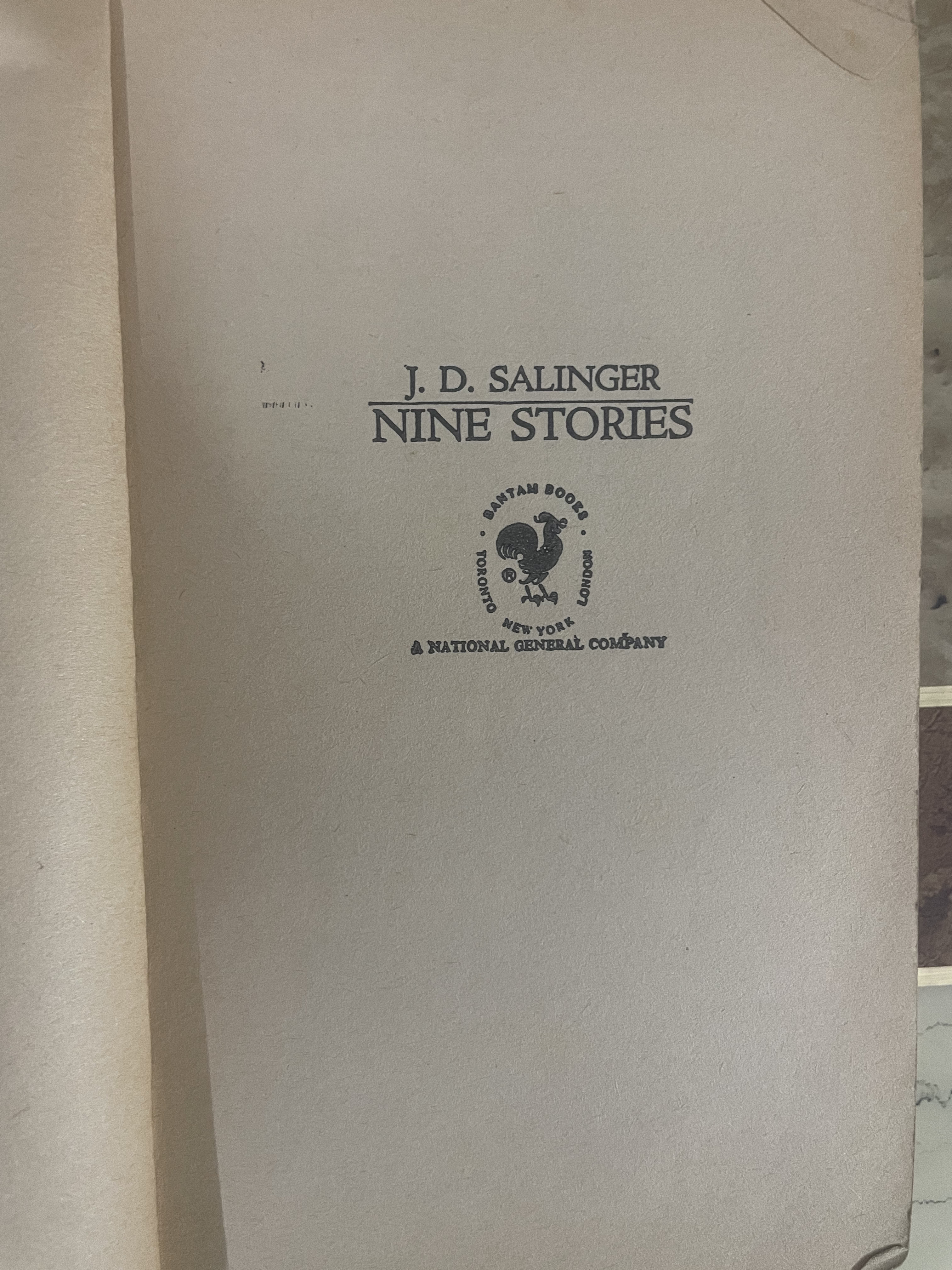Nine Stories

About
Summary
Exquisite
TOC
Details
Related
URL
Images
Overview
Nine Stories, a collection of short stories by the celebrated American author J.D. Salinger, remains a cornerstone of 20th-century literature. Published in April 1953, the anthology offers a poignant exploration of the human condition, marked by Salinger's signature style: sharp dialogue, introspective characters, and a deep sensitivity to the nuances of emotional experience. This collection cemented Salinger's reputation as a perceptive observer of post-war American society, grappling with themes of innocence, disillusionment, trauma, and the search for meaning in a rapidly changing world.
Nine Stories is not a novel in the traditional sense, but rather a carefully curated collection of short, impactful narratives. Each story functions as a snapshot, capturing specific moments in the lives of its characters, often revealing their vulnerabilities, anxieties, and yearnings. Salinger masterfully uses brevity to his advantage, conveying complex emotions and intricate relationships within a limited space. The stories are linked thematically, exploring recurring motifs such as the loss of innocence, the psychological impact of war, the challenges of communication, and the search for authenticity in a world often perceived as artificial or alienating. Several stories feature members of the fictional Glass family, offering glimpses into their interconnected lives and shared experiences. The collection is characterized by Salinger's distinctive narrative voice, which is both intimate and detached, allowing readers to connect with the characters on a personal level while also maintaining a critical distance. This narrative approach encourages introspection and invites readers to contemplate the deeper implications of the stories.
Importance of Book
Exploration of Complex Themes: Salinger's unflinching exploration of complex themes such as trauma, mental illness, and alienation resonated deeply with readers and helped to break down societal taboos.
Innovative Narrative Style: Salinger's distinctive narrative style, characterized by sharp dialogue, introspective characters, and a blend of humor and pathos, influenced subsequent generations of writers.
Cultural Commentary: The stories offer a perceptive commentary on post-war American society, capturing the anxieties, aspirations, and disillusionments of the era.
Enduring Relevance: Despite being written over half a century ago, the themes and issues explored in Nine Stories continue to resonate with readers today, making it a timeless classic.
Key Themes
Innocence vs. Disillusionment: This is perhaps the most pervasive theme in the collection. Salinger frequently juxtaposes the purity and naiveté of childhood with the harsh realities of adult life. Characters like Sybil in "A Perfect Day for Bananafish" or Esmé in "For Esmé—with Love and Squalor" represent a kind of untainted innocence that offers solace and hope to those who have been scarred by experience. However, this innocence is often threatened or compromised by the corrupting influences of the adult world, leading to disillusionment and a sense of loss.
The Impact of War: The shadow of World War II looms large over many of the stories. Characters like Sergeant X in "For Esmé—with Love and Squalor" and Seymour Glass in "A Perfect Day for Bananafish" are deeply affected by their wartime experiences, grappling with PTSD, emotional trauma, and a sense of alienation from civilian life. Salinger explores the psychological toll of combat, highlighting the challenges veterans face in readjusting to a society that often fails to understand or acknowledge their suffering.
Mental Health: Closely related to the theme of war is the exploration of mental health issues. Salinger portrays characters struggling with depression, anxiety, and other psychological disorders with sensitivity and insight. "A Perfect Day for Bananafish" is a particularly poignant example, depicting Seymour Glass's descent into madness and his tragic suicide. The story raises important questions about the stigma surrounding mental illness and the need for greater understanding and support for those who are suffering.
Alienation and Connection: Many of Salinger's characters feel a profound sense of alienation from the world around them. They struggle to connect with others, often feeling misunderstood or isolated. This sense of alienation can stem from various sources, including trauma, disillusionment, or a feeling of being different or out of place. However, the stories also explore the possibility of connection, highlighting the importance of empathy, compassion, and genuine human interaction.
Mortality: Themes of death, suicide, and the ephemeral nature of life permeate the collection. Characters grapple with their own mortality and the loss of loved ones, confronting the existential anxieties that are inherent to the human condition. Salinger doesn't shy away from depicting the darker aspects of life, but he also finds moments of beauty and grace amidst the suffering.
Cultural Significance
Increased Awareness of Mental Health Issues: The collection helped to raise awareness of mental health issues and challenge the stigma surrounding them.
Exploration of Post-War Trauma: Salinger's portrayal of the psychological aftermath of World War II contributed to a greater understanding of the challenges faced by veterans.
Influence on Literature and Art: The collection influenced countless writers, artists, and filmmakers, shaping the landscape of American culture.
Reflection of American Identity: The stories reflect the complexities of American identity, exploring themes of innocence, loss, and the search for meaning in a rapidly changing world.
Conclusion
Nine Stories is a powerful and moving collection that continues to captivate readers with its depth, complexity, and enduring relevance. Salinger's masterful storytelling and insightful exploration of the human condition make this collection a timeless classic that will be read and appreciated for generations to come. The stories invite introspection, spark dialogue, and offer a glimpse into the hearts and minds of characters grappling with the challenges of life in a complex and often bewildering world. The brilliance of Nine Stories lies in its ability to find moments of grace and beauty amidst the darkness, reminding us of the importance of empathy, compassion, and human connection.
Title
Nine Stories
Author
J D Salinger
Name of Publisher
Bantam Books
Publish Date
1964
Subject
It is a collection of short stories that delves into themes of innocence, alienation, and the complexities of human relationships
Vintage
1948-2000
Category
Literary
Sub Category
Fiction
Rarity
Normal
